#People With Hypertrichosis
Explore tagged Tumblr posts
Text

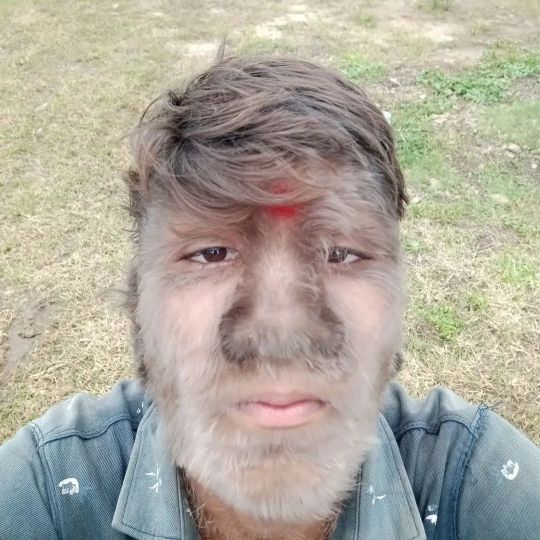
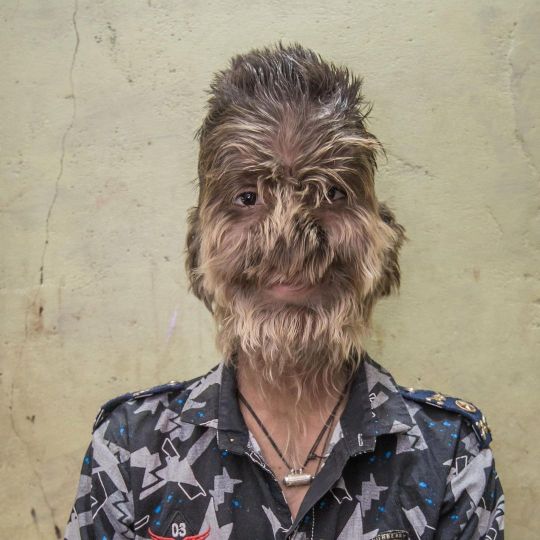
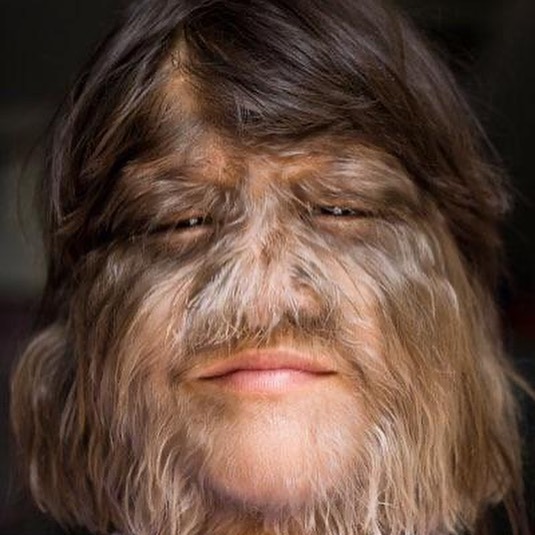

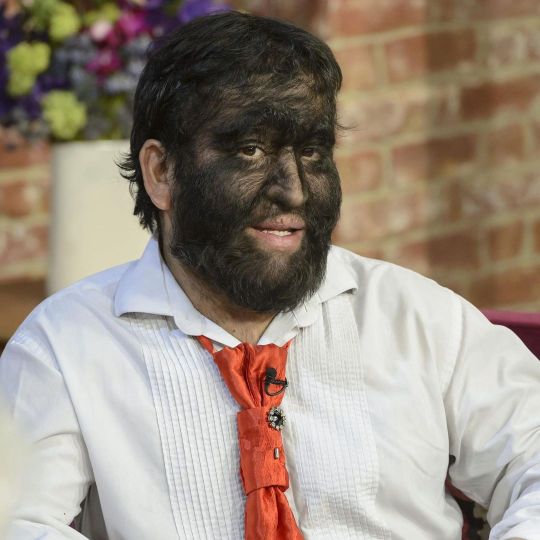
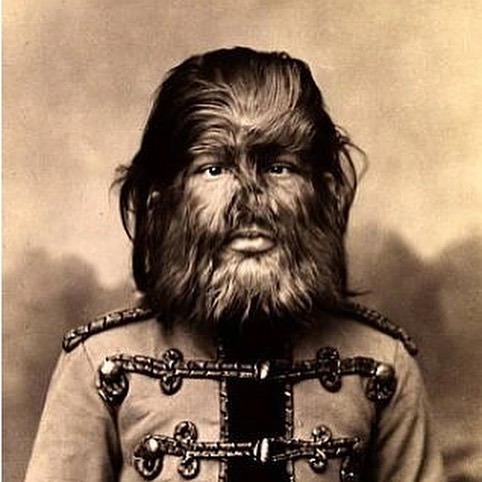

People With Hypertrichosis
Credit: MODERNNOTORIETY @modernnotoriety
#IG#Instagram#MODERNNOTORIETY @modernnotoriety#Hypertrichosis#People With Hypertrichosis#Hypertrichosis (Werewolf Syndrome)
6 notes
·
View notes
Photo
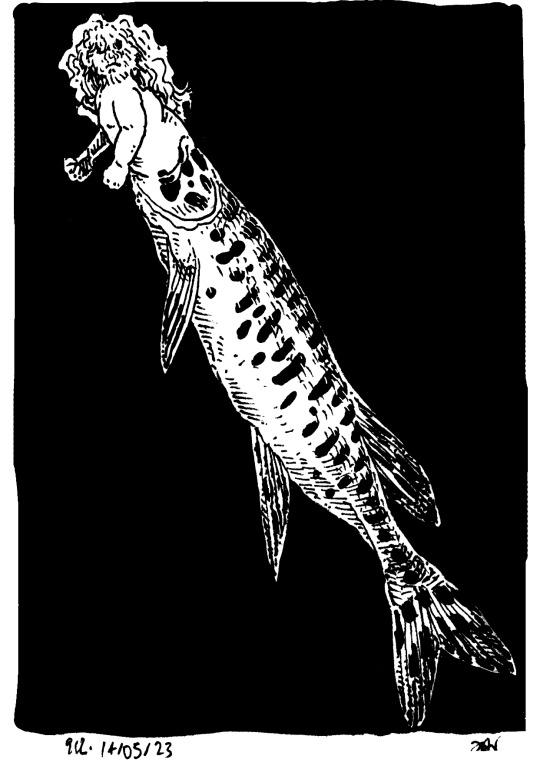
Maymaygwashi, the 228th Known One.
#Maymaygwashi#mermay#Ojibwa#Chippewa#based on a description found on the french wikipedia page ! im too lazy to do an actual translation aha#some people describe them as ''little people'' but the source quoted in the wiki page really sais they have fish lower bodies#merfolk#folklore#America#North America#human#hypertrichosis#fish#alevin#monster#chimera#bestiary#pathology#creature design#ink#912#octem 114#aqva 4#the Known Ones
345 notes
·
View notes
Text
Just found out what physical therian actually means
I always thought it meant some part of the way your body looks lead the way to your nonhuman identity like those people who grow an excessive amount of hair on their body (Hypertrichosis). I could totally understand how that could help find your way to finding out you're a therian, especially if it lines up like excessive hair and being a dog or a bear or another animal with lots of fur you literally already have all the fur
Turns out it just means a therian who physically identifies as their theriotype. So me fully believing I physically am my theriotypes makes me a physically therian?? Because that is how I feel, this isn't a human body, not anymore. This is the body of a rabbit with some mouse features, not a human. I don't think of myself as an animal trapped in a human body, i think of myself as an animal in my body.
That being said why the fuck do I see so many people hating on physical therians and saying they're not valid?? Like you're gonna go after someone who feels their body is that of a dog or a lizard?? That is the exact same vein as transphobia. That is the same thing as a transphobe going after a trans man for feeling their body is that of a man. It's not like they're lying, they're still therians. They just feel their bodies are what fits in their head just like trans people can feel their body is that of the gender that fits in their head. Just like not every trans person feels trapped in the body of a different gender, not every therian feels trapped in the body of a human, and you're gonna go after them because they don't experience the same pains as you? What does that make you? Cruel and pathetic. It makes you cruel and pathetic to invalidate and hurt other people just because they don't feel the same type of pain you do. Fucking fix it.
#therian#therianthropy#physical therian#physical therianthropy#physical alterhumanity#physical nonhuman#alterhuman#alterhumanity#nonhuman#therians#therian community#holothere#otherkin#physically nonhuman#nonhumanity
110 notes
·
View notes
Note
Hi! I know there are a lot of bad tropes about people with disabilities, and obviously I don't want to do them, but I was thinking that instead of avoiding them, it might be interesting to subvert/flip them instead.
For example, the "Super cool sci-fi prosthetic/aid that basically makes this character able bodied" except the character finds it a pain in the ass to use and just uses a normal wheelchair/prosthetic 99% of the time.
Or "Disabled people are monsters/inhuman" except the guy with, Idk, hypertrichosis named Wolf is just a normal dude and his petite, softspoken able-bodied girlfriend named Kitty is the one that turns into a werewolf on the full moon.
Or "The masking trope" but the person with a facial scar has to use a mask for safety reasons or they're at a masquerade ball and they get a custom mask that has their scar painted on it because they think their scar is cool looking.
Or "The disability reveal" except instead of being horrified or disgusted by the disabled person, everyone just sort of goes "Huh! Anyways, what were you saying earlier?"
Does this sort of thing sound like it could still be a problem? I love flipping/subverting tropes and I think it would be a great way to challenge people and make them think about their biases/assumptions regarding disabled people.
But I'm also worried that I would accidentally make something even worse. Do you guys have any advice?
Also, there are some that I don't want to flip or even deal with, like the "person fakes a disability". I honestly don't even know where to start with that mess and I can't think of a way to flip it that would make sense and not be some sort of incoherent nonsense lmao.
Hello lovely asker!
I think this sounds absolutely delightful (I especially like the one about the man with hypertrichosis and his werewolf girlfriend kitty.) This sounds like such a fun way to flip the tropes and the ones you picked and explained sound great.
And actually for the "person fakes disability" trope I think the show Special actually takes a sorta subverting take on that trope and does it in an interesting and comedic way (also it's a good show) if you would like to see a possible example. Another good Invert of a trope is in "Where the truth lies" (1999) and it takes a twist on the "The disabled person could never commit that crime!" trope. It stars Marlee Matlin and again another movie I highly recommend especially if your into messing about with tropes.
Subverting I think can make people a bit anxious just because you're not sure if it's actually going to end in the trope or be subverted, that sorta last minute switch and "Oh it didn't happen, phew" thing. But if it's done good, well, it's good. Subverting the trope from the get-go (like Special does) is a way to kinda ease that worry, but either way they both can be good.
Another thing you can do is change the trope where tropes are known within the story. The first one that comes to mind is like the "Disabled people die first" trope. So your characters are about to go into somewhere spooky but then your disabled character goes "Oh no, I'm not going in there. Disabled people always die first, you guys go on ahead.". This is often done with the "Disabled villain" trope too where something happens and then the character goes "I'm not gonna go all [mention of prominent disabled villain in media that has the same disability as them] on you guys!"
The only thing I would keep in mind, especially for Inverting Tropes is that often they are played for laughs. Now I don't mean like above where the purpose of the story is supposed to be funny/a comedy. I mean in the instance that the disabled person, even with the trope changed, is made the target of the joke. And as you said, you are right that some of the tropes are just better left alone partly because it is hard to make something good out of them. The "Cure Trope" is one that I just can't think of anything for, and there are many more that are just bad and are better left alone to perish.
This all sounds fun though! I hope you do end up doing something with any of these ideas of yours (if you write the hypertrichosis one I would absolutely love to read that one!). Happy writing!
~ Mod Virus 🌸
113 notes
·
View notes
Text
Watched ant’s werewolf video.
youtube
(And the transcript)
I applaud the history and mythology section but there’s never mention of the other werewolves!
And to that
I have to grab the sources, More specifically this!

Welcome to my silly hyperfixation sperg!
I love me some mythology and history of these fantastical creatures. I do enjoy the movie approach and filmography of the werewolf history. (Even though you skipped shapeshifters from ❤️💀🤖) but I wanted to add to the cryptozoological side of it even if I’m a bit amateurish of the study.

Let’s dive in
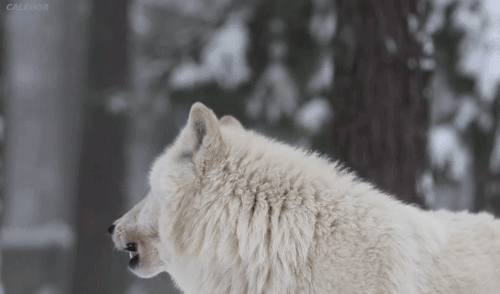
Though early origins to the term of lycanthropy dating back to Ancient Rome and Ancient Greece via Latin language, humans that transform into dog like hybrids is a universal concept that can be found all over the world from Europe to South Asia!
As was our human way to explain what wasn’t yet known scientifically of modern times, for the civilizations who came before us, strangeness in people from neurological to physical abnormalities were thought to be otherworldly!
A rare mutation but oldest documented instance is when the hair on the body grow longer than what is “normal” leading to top to bottom fully covered in hair people: Hypertrichosis. Which is where the image of transformation came from or at least hypothesized to have been the origins of. Then there’s the actual clinically diagnosis of “clinical lycanthropy” which is when someone who has this believes they are in fact a werewolf.
So with the fun science out of the way! Allow me to list off every lycanthrope from around the world!
In alphabetical order of each name:
Airitech
Folklore of the Goidelic Celts.
Alp
Originating in Germany
Anjing Ajak
Indonesia
Azeman
Suriname folklore
Bal-bal
Philippines
Beast of Gevaudin
(Werehyena) France
Budas
Ancient Abyssinia
Buxenwolf
German folklore
Enkidu
Gilgamesh’s “best friend”
Headless mule
Iberian folklore - Portugal and Spain
Karkanxhol
Kolivilor
Albanian mythology
Kornwolf
Estonia, France, Germany, Hungary, Latvia, Poland and Russia
Lobis-Homem
Ancient Portuguese folklore
Lobishomen
(Female vampire witch werewolf) Brazil
Lobison
Argentina
Loup Garou
French origin and Caribbean island folklore
Luison
Paraguayan folklore
Lupo Mannaro
Italian and ancient Roman folklore
Marrock (Marrok the good knight)
Arthurian folklore
Zmag Ognjeni Vuk
Bosnian folklore (fire breathing werewolf)
I need a minute to catch my breath!
Ok!
As you can tell there’s quite a lot but I feel the need to also mention a morally good lycanthrope
Hailing from the Shetland isles of Scotland: the Wulver
They’d watch over flocks and tend to chores and leave behind fish on the windowsills of homes once they’re done helping. It’s said they’d only act in violence if provoked but other than that they were mostly seen as good!
So that’s my lil sperging about werewolf mythology! Good video Anthony!
I’m shook that no one mentioned the werewolves from the Halloween anthology film “Trick or Treat” or “the wolf among us” which was about the big bad wolf being a detective in a modern setting with fairytales and murder! Or the other red riding hood movie! “Red Riding Hood” (2011); with really good color story of mostly black and white scenery and striking red from our leading lady!
Ohmygod I nearly forgot that Pokémon even has a werewolf pokemon!

But ye I don’t have any better way to end this… other than a silly animation >:3c
40 notes
·
View notes
Text
Making a character inspired off Joseph Merrick for a book I'm doing for my art finals so I'm practicing.
It's a lot easier to translate their facial features and adding different emotions to them than I thought it'd be bc Ive never drawn facial structures that aren't considered the norm so I'm quite happy.

The story that the character I'm trying to design is about people who were within a circus freak show.
I'm making a few books calling out the abuses of the circus and their exploitation of minority groups.
---
Tw. Mentioned racism for Charlie bc of his stage name.
Isabelle is inspired off a painting of a bearded woman (whom was in the circus) and breast feeding her baby with her husband in the background. (A woman with PCOS)
Angus is generally inspired off the many real life stories of people with hypertrichosis and having to go into performance to make a living.
Charlie is specifically based off the real story of George and Willie Muse.
The last one (Im still figuring out her name) is generally inspired off the experience of dwarfism and the infantalization of people with it, especially women. Using Jyoti Amge as a main inspiration for her experiences.

---
Some more character designs I did for the other books I'm making for my finals.



#my art#ocs#my ocs#oc art#original character#original characters#oc#character design#character study#art study
23 notes
·
View notes
Text
Werewolf Fact #73 - Hypertrichosis, excessive hair growth ("werewolf syndrome"), Beauty and the Beast, and Bluebeard
Today I'll be covering something else clinical: hypertrichosis.

You may have heard of "werewolf syndrome," a condition of excessive hair growth. It isn't to be confused with clinical lycanthropy, which is something else entirely. "Werewolf syndrome" is also called hypertrichosis - and it's occasionally associated with and/or can even be derived from another condition, porphyria, that was also associated with "werewolves" throughout scholarship. Likewise, the most well-known kind of hypertrichosis that involves excessive hair growth all over the body is also often associated with gum and teeth problems; such issues could lead to unusual teeth and mouth shape.
Interestingly, however, despite a lot of modern scholars retroactively assuming that werewolf victims of the past could have suffered hypertrichosis, many of the werewolf legends in question specifically describe lycanthropy sufferers to look quite different. The legends in question are later era ones from the Early Modern period, during which time lycanthropy had become a madness and a disease under clinical and scientific supervision, very much unlike previous time periods, as I cover extensively in my book The Werewolf: Past and Future as well as other werewolf facts.
These legends describe sufferers of the werewolf curse variably to only be "hairy" when in their wolf form specifically (other than, occasionally, having long hair without mention of unusual body hair), highlighting how they were not unusually hairy in human form, or to "always [have] some hairs in the hollow of his hand" (as noted by Sabine Baring-Gould in The Book of Were-Wolves; taken from page 121 of my own edition of his work). Hypertrichosis often specifically does not have hair growth on the palms, conversely. Likewise, many legends of later time periods even specifically say that werewolves are not hairy "on the outside," but that their hair "grows inward" when they aren't in their inhuman form.
Still, scholars entertain the notion of connections that I still question to a healthy degree, so I have studied it as a result. I think it's best to simply summarize it as, the syndrome reminds people of what werewolves are meant to look like, rather than asserting that "this is why some people believed in werewolves" and the like.
Hypertrichosis is rare, and any kind of proper documentation only began perhaps around the 1600s. During this time and for a very long time after, sufferers of hypertrichosis were often called a variety of terms like "ape-men" or "wolf-men." They were considered spectacles and often were brought to noble courts like exotic animals, to entertain high society. Many were circus freaks. Not all examples are before our time, either.
But, Mav, you ask, how is this related to Beauty and the Beast and Bluebeard? Aren't those fairytales?
One famous example of someone with hypertrichosis is the one whose related image began this post: Petrus Gonsalvus, who lived from around 1537 to sometime past 1617. He was called assorted names, such as "the wild gentleman of Tenerife," "the man of the woods," and of course, "the Canarian werewolf." He lived in assorted courts throughout both Italy and France, including the court of Henry II, King of France, around 1547 - he was sent there when he was but 10 years old as a gift from a regent (Margaret of Parma) of the Netherlands. He moved about various courts over time and even married.
Much of Gonsalvus's family inherited his condition (four of his seven children), including some of his daughters. Like their father, they were often traded amongst courts as pets of a sort. Here is Madelene Gonsalvus, a portrait from 1580:

It is believed that the marriage of Petrus Gonsalvus to his wife, a woman believed to be named Catherine and a lady-in-waiting to Catherine de Medici, may have provided some inspiration for the tale of Beauty and the Beast, which was first written in 1740 by Gabrielle-Suzanne Barbot de Villeneuve.
Beauty and the Beast may not be the only fairytale inspired by hypertrichosis, either. The tale of Bluebeard, as also discussed by Baring-Gould in his Book of Werewolves, describes Bluebeard as "His hair and moustache were light brown, and his beard was clipped to a point. This beard, which resembled no other beard" (232), similar to some elements of hypertrichosis variations, as well as mention of his gum condition: "At intervals he ground his teeth like a wild beast preparing to dash upon his prey, and then his lips became so contracted, as they were drawn in and glued, as it were, to his teeth, that their very colour was indiscernible" (233).
Sidebar: if you're interested in the story of Bluebeard and what it was based on, definitely check out Sabine Baring-Gould's The Book of Were-Wolves, as he has an unmatched documentation of it. I don't think it really has a place in a book about werewolves, but obviously I preserved his work in its original condition, so you can find it in my edition of his book, as well. It's not for the faint of heart, but it's morbidly very interesting.
So, connection to werewolves or not, it's still certain that hypertrichosis was seen as an inhuman condition. There are many examples of people who had or have the condition and records of how they were treated throughout history.
As mentioned, I have to wonder how much of this was actually associated with werewolf legends - given legends always explicitly involved transformation, which was the entire basis of it - but scholars eat this kind of thing up. In academia, everyone is always trying to come up with "new arguments" to "add to the conversation" or whatever, so we end up discussing and studying hypertrichosis alongside werewolf legends that specifically state such things weren't a part of the legends. Weird, isn't it?
Anyway, hope you enjoyed the post. Until next time!
And stay tuned for news and updates on a major [werewolf] book release later this year!
If you like my blog, be sure to follow me here and elsewhere for more folklore and fiction, including books, especially on werewolves! You can also sign up for my free newsletter for monthly werewolf/vampire/folklore facts, a free story, and book previews.
Free Newsletter - maverickwerewolf.com (personal site + book shop + free fiction) — Patreon — Wulfgard — Werewolf Fact Masterlist — X — Vampire Fact Masterlist — Amazon Author page
#werewolf#werewolves#werewolf fact#werewolf facts#werewolf wednesday#werewolfwednesday#folklore#folklore facts#mythology#history#wolf#wolves#lycanthrope#lycanthropes#lycanthropy#shapeshifting#shapeshifters#resources#hypertrichosis#beauty and the beast#fairytales#fairy tale
25 notes
·
View notes
Text
Way before learning about otherkinity or therianthropy, back when I was a little baby creature, trapped in school, forced to hang out with 8 y/o humans, I would often sneak off and hide in the school library.
We weren't allowed to be there without a teacher present, but they often forgot to lock the door, and way in the back, far away from the windows, back where no one could find me, there just so happened to be a shelf full of 'mystery books.' They had everything, from UFOs, cryptids, and mythology to ESP, folklore... and werewolves.
These weren't big tomes - it was a village school with only 120 students, ranging from 5 to 12 years old. They were paperbacks catered mostly to 3rd graders, and they had all the trappings that those kinds of books tend to have, being sensationalist, scatterbrained, and simplistic at the best of times, and downright misinformed at the worst.
I know now that hypertrichosis had little to nothing to do with werewolf mythology. Werewolves were largely born out of fear of your neighbor, fear that they might be hiding something - and hypertrichosis is not exactly easy to hide. The tell-tale signs of werewolves are monobrows that can be plucked, a furry back that can be covered up, and a tendency to disappear for long stretches of time, while livestock get killed by wild animals.
But of course I didn't know that back then. My folkloric studies, as a 3rd grader, consisted of Dragonology and looking at pictures in my aunt's "Mysteries of the Unknown" collection, that I was far too young to have the patience to read.
So when I read about people who were thought to be werewolves because of their appearance, I took it at face value.
I wish the story takes a fantastical turn here, and that I started drawing fur on myself or wearing fur to school. But I was a quiet creature. I already got chased around by bullies at recess - why I hid in the library in the first place - and I didn't need to add to that.
But I envied the people who had fur. At least they were targeted for something visible, I thought. They didn't have to wonder why people might throw rocks at them or call them animals or act like their touch was poisonous.
I still sometimes wish I had hypertrichosis.
#otherkin#therian#every time i've tried to write something lately it's been quite... angsty#i think it's the winter depression setting in
53 notes
·
View notes
Text
(Note: poster is able-bodied)
this is gonna be a long-winded one, but it’s a question I’m interested in asking. I was curious about the position of people with things like hypertrichosis or albinism etc etc
again, I am able-bodied, and as an outsider, may have entirely misunderstood this discussion. Because of that, I’d love for people to elaborate on any answers they give in the reblogs/comments!!
Again, PLEASE elaborate in the tags/comments!! I’d love to read y’alls perspectives
#disability#disabled#disabilties#disability rights#disability awareness#disability pride#disability tag#disabilities#mobility aid#physical disability#chronic pain#chronic illness#chronically ill#chronic fatigue#tumblr polls#my polls#polls#blios rants
54 notes
·
View notes
Text
Comparing fairy tales with their inspirations from legendary sagas produces a weird effect, because you can see where the stories have been simplified and the behavior of the protagonists sanitized.
The Goose Girl whose position was stolen by her handmaiden and was reduced to speaking to her beheaded horse Falada was a club-footed princess who originally agreed to switch places with her maid because she was self-conscious about her feet and feared her prince was short and ugly. She was also mother of Charlemagne.
The Goose Girl at the Well who was exiled for saying she loved her father like meat loves salt was a British queen who led an army to rescue her father who had been driven insane by her abusive sisters.
Sleeping Beauty, who was cursed to sleep for a hundred years, was a Valkyrie who masterminded the death of her prince when he was brainwashed into marrying another woman, and then threw herself onto his pyre so she could die with him.
The youngest brother of the Wild Swans, whose arm remained a swan wing because his sister ran out of thread to make the tunic that would break his curse, became a knight in a swan boat that avenged a noble maiden's honor and had children with her that would give rise to the royal line of Bouillon.
Cinderella was a successful courtesan and a self-made woman, who had no fairy god mother, but did have a fling with fable-teller Aesop as well as an epic rivalry with her sister-in-law, who happened to be one of the greatest poets of their age. Alternatively, she was a queen of Egypt to died before seeing her family enslaved by the mad Persian king Cambyses.
The mystical husbands of East of the Sun and West of the Moon, The Iron Stove, and the Feather of Finist the Falcon were originally the god Eros, and the Beauty that had to find her husband after losing him was his wife Psyche.
Often the animal husband takes the form of a snake. In certain myths among the indigenous Taiwanese, the animal husband is a snake and the ancestor of their people. In Baltic and Slavic stories, the snake husband is never accepted by his wife's family, who kill him through deceit. Meanwhile, a 9th century Chinese story makes the husband into a Yaksha, and the lovers are eventually parted because the wife cannot stay in the realm of the Yaksha.
Related to the animal husband theme, the Beast was a tragic man from Tenerife with hypertrichosis, and Beauty was a noblewoman who was married to him almost as a joke. Though they lived a long and happy life together, four of their seven children were stolen away and sent to live in foreign courts because they shared their father's condition.
The Girl Without Hands was a Mercian queen who ruled her nation with iron fists, and was involved in more than one assassination.
Maid Maleen's original name was Brangaine, the maid of Tristan and Iseult. In most variants of the tale, it is the guilty bride who substitutes her maid in the bridal procession to hide her loss of virginity that is the actual protagonist. When the prince questions her about the children she has born, she is forced to reveal the tokens that her lover left with her, and the prince realizes that he himself is the lover in question, and apologizes and proceeds with the wedding.
The speechless Little Mermaid's beloved prince was a Swedish duke, brother to the king, named Magnus Vasa. He was afflicted with psychotic episodes throughout his life, and had assistants assigned to look after him. He never married but had a longtime affair with a commoner woman who cared for him. During one of his episodes, he jumped into a moat, claiming to have seen a woman there. This became the basis for a class of ballads called Herr Magnus and the Mermaid, which describes how Magnus lost his heart and then his mind to the mermaid after initially rejecting her. This then became stories of the tragic mermaid's rejection and revenge.
#mythology#history#fairy tale#little mermaid#sleeping beauty#cinderella#beauty and the beast#the goose girl#king lear#brothers grimm#hans christian andersen
30 notes
·
View notes
Text
When it comes to managing Polycystic Ovarian Syndrome (PCOS), the science and evidence-based aspects are merely part of the process. There’s something deeply valuable in sharing personal experiences. For many of us navigating PCOS, hearing from others who have been and still remain on a similar journey to us can provide comfort, solidarity, and the kind of invaluable insights that no medical textbook or journal article can offer. Our personal stories, our hardships and successes become a bridge between medical knowledge and lived reality, offering emotional support, validation, and most importantly, a sense of community.
In this post, we'll dive into two real-world narratives from people with PCOS who have undergone LBHR, focusing on their expectations, challenges, and emotional journeys. One is Bella, one of my friends clients, and the other is a client turned good friend who have all bravely consented to me sharing their stories on their behalf. Through these stories, I hope to shed light on the complexities of laser treatment for those living with hormonal imbalances and excess hair growth, offering a more complete understanding of what it’s like to walk this path. To remind you how common it is, and to remind you that you are not alone.
Nadia: Managing Paradoxical Hypertrichosis
Nadia, a 23-year-old woman with PCOS, has been battling hirsutism for years. By the age of 19, she had tried what seemed like every hair removal method under the sun. Off of the recommendation of a friend, she finally opted for laser-based hair reduction, hoping for smoother, hair-free skin. But after purchasing a package of around 7-8 sessions, Nadia noticed that rather than a reduction, her hair growth was increasing in some areas. Patches of thicker, coarser hair were appearing on her face and neck—an outcome completely opposite of what she had expected.
“I freaked out. I completely freaked out. I remember feeling so lost and confused, feeling like I had absolutely 0 control over my own body. I felt uncomfortable in my body, and like my femininity had been completely stripped from me. It wasn’t even the hair that bothered me, it was the excess. I don’t think there is anything worse than finally taking the leap to fix something that makes you so self-conscious, just to end up with it getting worse.”
After finding the skin clinic I was employed at and booking in a consultation with me, Nadia learned that what she was experiencing was common and had a name. It was called paradoxical hypertrichosis—a common side effect of laser treatments, where hair growth is triggered rather than reduced. The emotional toll was heavy. Not only did she have to deal with all of the physical changes, but the unexpected outcome left her feeling defeated and apprehensive about whether she even wanted to continue treatment.
However, with my help, we began to manage her condition. We created an individualised treatment plan based on Nadia’s individual hair assessment and switched to a different laser modality, and spaced out her sessions differently. It took some time, but the paradoxical hypertrichosis subsided within a few months.
“I’m just really grateful I met you, if I didn't it would have taken me way longer to find help. I needed someone to help me understand more about why my body was reacting the way it was and help me manage it properly. It’s just like when I first realised I had some kind of hormonal issue. I went to the doctor like you’re supposed to, like everybody tells you to. And nobody took me seriously. I feel like the same thing happened when I went to start laser, they just wanted to sell me all these extras. I never even had a consultation that was as thorough as my first appointment with you. Nobody ever told me about the side effects, or what could go wrong. That’s why it was such a shock to me I think.”
I asked Nadia if she would be comfortable sharing her story because while I know how hard it was for her, it’s something that has happened to so many women with PCOS. I feel like her story perfectly encapsulates how important it is for service providers to conduct proper consultations, making their clients aware of the pros AND cons of lasers as a treatment. You cannot give your consent to any treatment if you are not fully informed of the potential risks like paradoxical hypertrichosis. While many people say this side effect is rare, it is not rare in my experience and it can happen to anybody and everybody. This emphasises just how important it is to find an experienced clinician who has dealt with PCOS patients and laser treatments.
Bella: Navigating Expectations
Bella, my good friend of 5 years who was diagnosed with PCOS in her late teens has struggled with excess hair growth for years. She felt immense relief when she discovered laser-based hair reduction. The idea of a "permanent" solution to hirsutism gave her hope, and she went into her first consultation with high expectations. The clinicians she saw initially gave her a great pitch about LBHR being a great treatment option for somebody looking for significant, long-term hair reduction. However, they failed to explain to her that
It was not an overnight fix
Nor was it a guarantee of complete removal—especially for someone with PCOS.
At first, she was incredibly eager. She completed her six recommended sessions, only to find that while her hair growth had slowed, it hadn't disappeared. In fact, some areas seemed to regrow more quickly than she expected. Disappointed, she realised that the hormonal imbalances caused by PCOS would continue to affect her results, meaning she’d need ongoing maintenance treatments.
“I felt so frustrated, like all my money had gone down the drain. They didn’t really explain to me properly that the laser wasn’t permanent hair removal, I feel like there should be more education around that area. But they did help me adjust my mindset after the fact. We had taken a photo at my first consultation and after my 3rd laser session. I was at my 6th session when I felt like I was unhappy because there was still some hair growth. Once they showed me my photos from earlier sessions, I realised what a big difference the sessions had made. It made me really appreciate how much better it had gotten. The hair used to be so thick, and I had hyperpigmentation in the area as well as texture from constantly shaving. I wouldn’t have realised if I hadn’t been shown those photos.”
“I feel like I was so obsessive and particular at the start because the amount of hair growth I had felt so debilitating at times. It was literally all I could see when I looked at myself. So because I felt a lack of control over my appearance, it set my expectations real high.”
While it wasn’t the permanent solution Bella had hoped for, her journey shifted from wanting perfection to embracing her progress. She learned that managing expectations was key to making peace with the treatment and finding satisfaction in the results she did achieve.
The Power of Shared Experiences
As we come to the end of this series on LBHR for those managing PCOS, it’s clearer more than ever that this journey is deeply personal, and results can vary from one person to the other. And while we've delved deep into the science behind treatments like LBHR, it’s the shared experiences and personal stories that provide true insight into what it’s like to live with PCOS and pursue this form of hair reduction.
Whether it’s navigating the highs and lows of treatment, managing unexpected outcomes like paradoxical hypertrichosis, or finally gaining a sense of autonomy after years of struggling with hirsutism, each story reminds us of the strength it takes to seek solutions for a condition as complex as PCOS. Through the case studies and anecdotes shared in this blog, I hope you’ve found guidance, reassurance, and a deeper understanding of what LBHR can offer.
As you move forward with your own decisions about PCOS management, remember to consult with trusted clinicians, do your own research, and take comfort in knowing that you’re not alone. The emotional impact of PCOS cannot be understated, and pursuing treatments like LBHR can be both challenging and empowering all in one.
Most importantly, never underestimate the value of our shared experiences—whether they come from clinicians, friends, or other people with PCOS. Our stories are a powerful tool for understanding, connection, and, ultimately, making informed choices about how exactly to navigate your own journey.
L 🤍
6 notes
·
View notes
Note
19. the most interesting topic you’ve researched for a fic?
I did some research for carnival culture for Mr. Faire. It led me down a rabbit hole of the so called “freak shows” and I got super into the individual people and attractions and stuff. I specifically got fascinated by the people with hypertrichosis. I watched the movie Freaks and read up about the actors. I also got super into stuff about Joseph Merrick.
Another topic I got into which led into one of my mom’s special interests was old world prostitutes, specially during the old west. My mom has so many books and stuff on the subject. (Her bathroom is even themed around an old brothel.)
Anyways, I really was fascinated by these topics and specifically the people.
7 notes
·
View notes
Text
I know I look like I'm jumping on this suddenly, but I really think implying ALL shifters are delusional is dangerous (like, legitimately dangerous) for several reasons:
It muddies the water between clinical delusions and odd beliefs. You're allowed to have weird beliefs, but they tend to be treated as delusions if they cause issues. There are specific qualities to delusions that odd beliefs don't have (delusions are steadfast, can be distressing, and have a very omnipotent quality to them) and depending on how they appeared, could be the start of a medical condition like celiac disease. Physical shifting beliefs do not come with these same issues. The reason why we treat delusions is because it is often a warning sign something is wrong, not because their beliefs are odd, and shifters dont naturally have those signs.
There are kids in this community. Children are often weird and goofy as they mature, and a lot go through phases of being special. Some will find the shifter community, some will try to claim they're all sorts of things, and since it's the internet you can't validate their claims. You know how you wouldn't (or at least you shouldn't) armchair diagnose a 12 year old with schizophrenia just because they believe in unicorns? I find it very dangerous to say that p-shifters are all delusional because of that, seeing as how most of us know the community can be composed of younger kids -some may be simply wishful or imaginative, and they shouldn't be told they're mentally ill for that.
Bouncing off of that last point, it could lead to younger kids accidentally invading clinical lycanthropy spaces because they've been told they're delusional, and making a mess of them because they want to learn shifting or think they're lycanthropes when they're not.
It could also lead to them neglecting physical medical conditions they've had. Many times kids may not be aware of or understate medical conditions they may have, and if they appear similar to stereotypes of shifting they may think they're physically shifting when they're not. If someone claims they physically shift their hands so they get bigger, and someone else tells them they're delusional, that could lead to them neglecting the time sensitive immune disorder that allows them to do that. If someone says they're growing hair all over and have anger issues, they could have a tumor causing hypertrichosis and personality changes. Not every physical shifting claim is "impossible".
Like, I'm not against delusional people or people seeking out help, but I think if you're going to blanket label everyone as a clinical lycanthrope in denial, your reasons better be good beyond "they believe in p-shifting", especially since it can be misleading medically.
#lycanthropy#physical shifting#werewolves#nonhuman#illness#p-shifting#pshifting#proudphysicalshifter#werewolf#real shapeshifters#shapeshifters
32 notes
·
View notes
Text
So the thing about vampires is that they’re not actually aristocrats. They pretend to be aristocrats, but they’re interlopers, putting on a façade of nobility so they can infiltrate high society. The disguise makes them trusted, respectable, above reproach, but it was always a lie. There is no nobility in the monstrous dead.
Carmilla by Sheridan Le Fanu was published in 1872, 25 years before Dracula. The titular character passes herself off as a young noblewoman in dire straits, so she’s taken in as a guest by an aging widower and his teenage daughter, Laura, who live alone and isolated in a castle in the wilds of Austria. (Alone except for the servants, of course, and isolated except for the nearby village, but everyone knows people don’t count as company if they’re below a certain social class and/or not English.) Carmilla is strange, intense, prone to bouts of melancholy and brief bursts of passionate anger, and will say nothing about her family or her past. Laura has multiple eerie dreams about her. They of course become close friends. Pals, one might even say. Just gals being pals.
Young women in the nearby village start dying, Laura contracts a mysterious illness, Laura keeps dreaming that a panther comes into her room at night and bites her on the breast before turning into a woman and disappearing, etc. Obviously Carmilla is a vampire. Carmilla is also an anagram of Mircalla, a countess from nearly 200 years before. Carmilla really likes anagrams, it turns out, and regularly goes around seducing young women to death under anagrammed pseudonyms.
And look I realize that Carmilla actually being a long-dead countess seems to contradict the whole “not really nobility” thing, but Carmilla's not a countess anymore in the same way Lucy’s not herself anymore after a certain point. That countess is dead. Carmilla is the thing that wears her skin.
Anyway all of this is because I’ve decided to catch up on Dracula Daily by listening to the podcast (phenomenal sound design btw), and I just finished May 5, where we have this little description:
Hitherto I had noticed the backs of his hands as they lay on his knees in the firelight, and they had seemed rather white and fine; but seeing them now close to me, I could not but notice that they were rather coarse—broad, with squat fingers.
Dracula seems to have fine, pale hands, the hands of an aristocrat, but on closer inspection they’re not fine at all. The façade doesn’t hold up to true scrutiny.
But of course it goes further than that, because he’s not just a regular man pretending to be a count. A regular man doesn’t have hairs growing in the center of his palm. A regular man doesn’t have nails filed to a sharp point. He’s not a man at all.
— disclaimer that actually some people DO have hairy palms, it’s a form of localized hypertrichosis (aka hair in unexpected places) and it’s not at all common, but it is perfectly normal in the same way that lots of weird body stuff is perfectly normal. human bodies get up to some wild shit! “average person with hairy palms is a monstrous creature of the night” actually a statistical error; Vlad Dracula, the most famous haver of hairy palms in all literature, is an exception adn should not have been count.
#dracula daily#absolutely loving the podcast#they did a great job with it#dracula meta#finx reads dracula
37 notes
·
View notes
Text
i love love LOOOVE hearing theories on the origins of the fantastical legends throughout human history, that show how much less interesting and romantic the universe actually is.
some of my favourites are:
Demonic possessions were actually just people having epileptic episodes before epilepsy was a known thing
Sea Serpents and other oceanic leviathans were actually just whale carcasses that had bloated postmortem and floated to the surface of the open ocean
The traditional alien abduction story where a some gets abducted, inspected, anally probed, and sent back to his bed all in the night is actually just the repressed traumatic memories of someone as a baby having a fever and getting their temperature checked rectally. The aliens in this case being their caretakers
Werewolves were actually just some people with exceptional cases of hypertrichosis
I would love if these were documented somewhere in a master table of theories/explanations
4 notes
·
View notes
Text

This is Lalit Patel. He has an extremely rare condition called Hypertrichosis, also known as werewolf syndrome. According to the media reports, the Indian teen said that people threw stones at him due to excessive hair growth and kids were scared that he would bite them. Unfortunately there is no cure for his condition.
Only 50 known people have had this condition.
10 notes
·
View notes